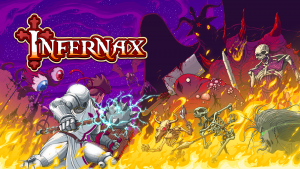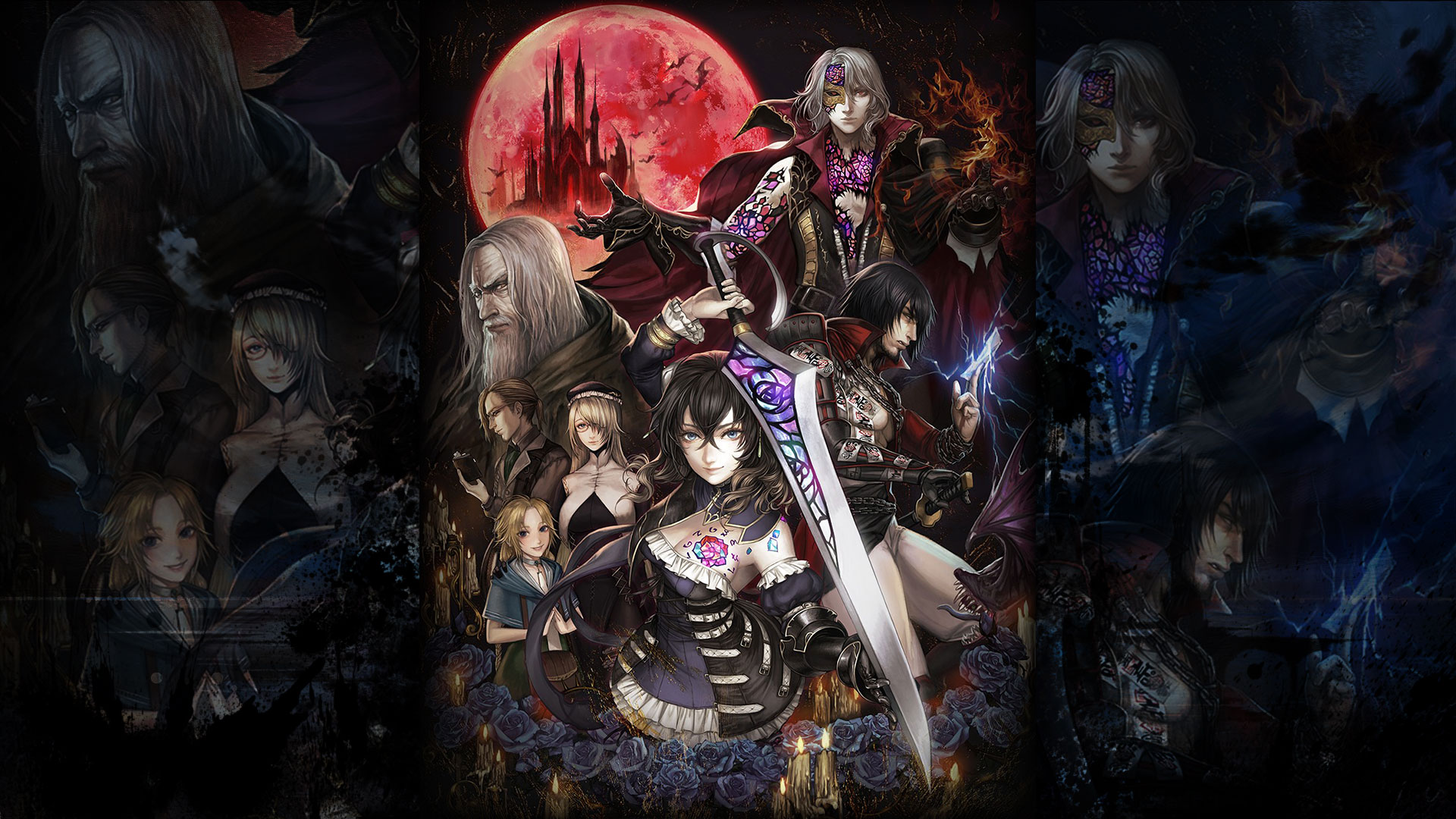
Metroidvania titles aren’t exactly a novelty anymore. Games like Cave Story and Shadow Complex have helped usher in an age where this style of exploration focused platformer has become one of the de facto genres for indie developers. But despite the arguable oversaturation of this style of game, fans flocked to the Kickstarter for Bloodstained: Ritual of the Night in droves. And considering who was helming the project, it was easy to see why. The face of the campaign, Koji Igarashi, is known for heading the team at Konami that put the “vania” in Metroidvania. Igarashi was the assistant director of Castlevania: Symphony of the Night, and oversaw the many handheld follow-ups that further solidified melding RPG mechanics to the upgrade based progression of Metroid.
But in a gaming landscape flooded with titles inspired by the work of Igarashi, how could his team possibly differentiate their creation? As it turns out, the way to do this was to fully lean into what made Symphony of the Night unique in the first place, namely the RPG elements, customizable equipment, and gothic aesthetic. Bloodstained successfully builds its own legacy in the canon of the genre by presenting a large mysterious world full of complex overlapping RPG mechanics. Its layers of progression systems create an empowering and consistent sense of improvement which further incentivizes annihilating the hordes of monsters in your path.
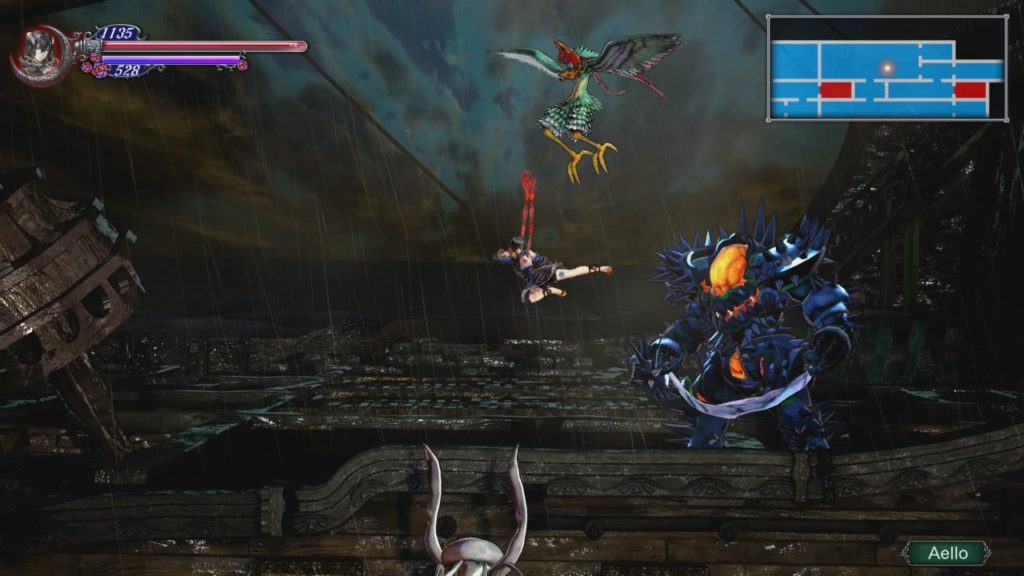
Set in 18th century England, you play as a Shardbinder named Miriam. As a Shardbinder, she is imbued with magic crystals that allow her to absorb demonic power. When her old friend Gebel summons an otherworldly castle in an attempt to bring about an invasion of hellspawn, Miriam sets out to stop him. Beyond the similarities of its gothic aesthetic, many of the game’s mechanics also feel like callbacks to Igarashi’s previous games. For those unfamiliar with Metroidvania titles in general, here you must explore a labyrinthine world, finding new abilities which allow traversal to new areas.
More specifically, this game emulates many of the movement techniques and RPG systems of Castlevania. There’s a back dash that allows you to dodge enemies and cancel out of attacks. There’s a slide that gives extra speed. You have stats that are improved through leveling. While games have come a long way since Symphony of the Night combined action-RPG gameplay with Metroid in 1997, this synthesis of D&D mechanics and exploration is still quite fun. The open-ended nature of Bloodstained’s world lends a sense of discovery that is bolstered by the huge number of different weapons, equipment, and unlockable abilities.
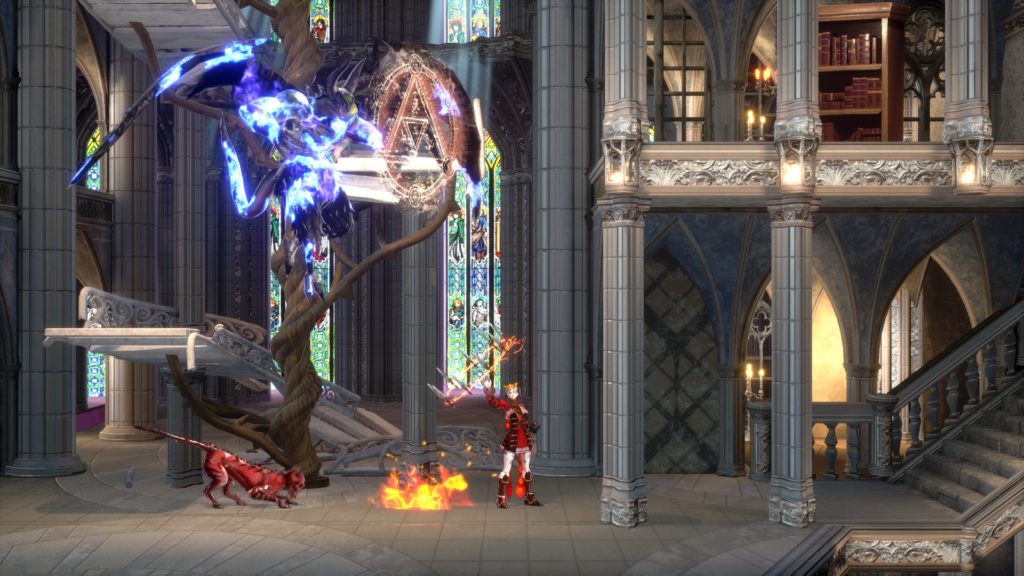
The most striking unique mechanic here is the inclusion of Shards, which are abilities that are unlocked by killing enemies. Virtually all of the monsters in the game have the potential to drop a Shard when killed, and while some didn’t strike me as particularly useful, many of these abilities can dramatically affect the flow of the game. Some offer incredible defensive options, while others can allow you to obliterate enemies from a distance. And because the Shards are all optional, stumbling on a particularly powerful ability or figuring out how they can be exploited evokes a satisfying feeling of unearthing something unique.
By the end of the game I felt truly equipped for anything, with deadly ranged attacks, moves that allowed me to successfully negate damage, a familiar that would launch holy arrows of light, and abilities that dramatically improved my close ranged effectiveness. There are also configurable shortcuts which allow you to quickly switch between different combinations of equipment, weapons, and shards, meaning that you can easily design different loadouts for different scenarios. On top of these abilities enabling some gratifying demon-shredding, the huge number of different options granted a feeling of ownership over my toolset.

The shard system feels like a good microcosm for what the game does right in general, granting a great deal of different customizable options which dovetail nicely with the crafting mechanics. Crafting in Ritual of the Night allows you to create almost every item in the game from materials that you can find from slain monsters and in chests throughout the world. You can create equipment that boosts your stats, and that in some cases, grant certain unique properties like movement buffs or higher XP growth. You can cook food which gives permanent stat boosts and recovers health. You can boost the effectiveness of your shards. And of course, you can forge weapons as well. The diversity of weapon types blends in nicely with the general theme of customization. There are lances, clubs, whips, short swords, great swords, katanas, daggers, boots, and guns, each of which can potentially be more effective against certain types of enemies.
Many of these weapons even have special techniques that can be performed by inputting fighting-game inputs such as quarter-circles, adding another layer of differentiation between them. The constant acquisition of new materials allows for the creation of bigger and better tools, helping you tame the demonic hordes. While these types of progression systems are certainly nothing new, it is nice that they feel substantive and rewarding here. The importance of crafting also ties in nicely with the exploration elements, as you are constantly rewarded for killing the various monstrosities that you discover in the nooks and crannies of this world.
Exploring this forlorn castle evokes shades of the best entries in the genre, its halls branching in every direction with subtle hints at progression. For the most part, the world design strikes a balance between linearity and being overly obtuse, gently guiding the player in the right direction. Every new area sprawls in a few different directions, with some optional regions intermixed with pivotal corridors. You are also given the abilities to add markers to the map, making it easy to note which rooms haven’t been fully explored. Admittedly, there were one or two moments where the solutions to problems felt somewhat obscure and left me backtracking for what felt like far too long. But still, the many moments of discovery superseded the occasional odd frustration.
Additionally, the different realms of the castle are each imbued with their own distinct look and feel. There are mad scientist labs, ornate palace halls, underwater caverns, and verdant gardens, the unique aesthetic of each area aiding in the desire to uncover more regions. There are a massive number of different enemy types and many unique platforming challenges that make up this weirdly diverse hunk of gothic architecture. Michiru Yamane’s dark classical soundtrack blankets each distinct location with a wave of wonderfully dramatic Victorian tunes.
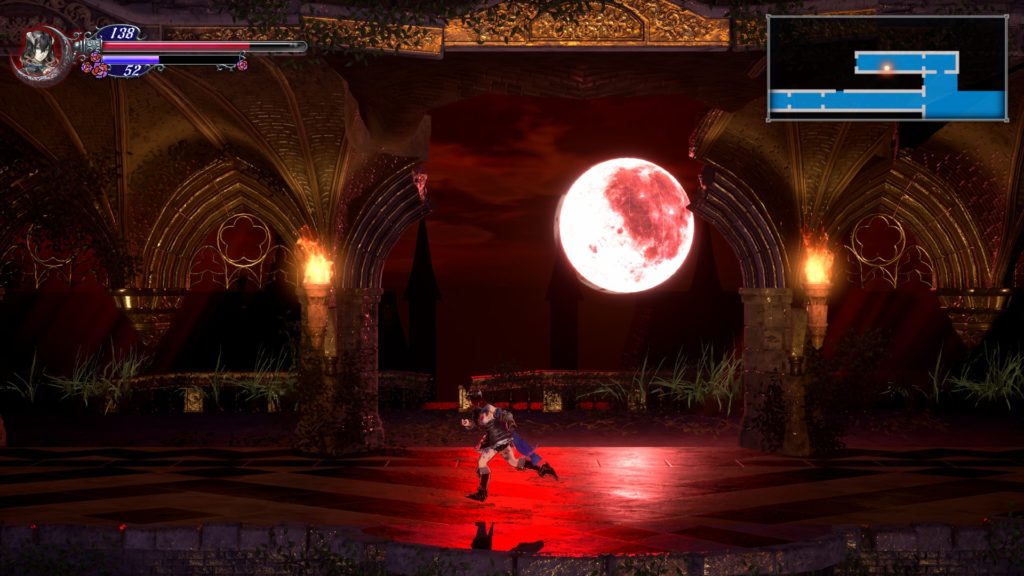
But while the art design here is quite strong, particularly the monster designs and the look of the different zones of the overworld, some of the 3D models and animations don’t quite hold up their end of the bargain. Occasionally the textures on the background art look a little flat, undercutting the appeal of the distinctive biomes. Frame rates also suffer in certain areas on the PS4, with one particular boss fight standing out as noticeably bad. Animations, especially in the cutscenes, are somewhat stiff and undercut the drama at times.
More importantly, this stiffness can bleed into the gameplay, and before you have upgraded your character the combat can feel unresponsive. While you can back dash at any point during an attack animation, your opponent’s quick attack speeds combine with a small degree of input delay in your back dash to make avoiding enemies feel finicky. While there are ways to speed up your movement, and you eventually unlock many abilities and weapons that make combat far more entertaining, the early hours are definitely the weakest for enemy encounters. Still, by the end of my twenty-hour playthrough, I found that my many shards, stat upgrades, and general experience with the different enemies made it enjoyable to slash through the throngs of demons.

Overall, Bloodstained: Ritual of the Night is a worthy successor to the lofty legacy of Igarashi’s previous work. The teams at ArtPlay, DICO, and WayForward successfully capture the same synthesis between progression systems and exploration that made Symphony of the Night an all-time classic, while expanding on many of its spiritual predecessor’s core systems. The large number of unique weapons, equipment, and abilities lends a notable degree of customization, and further encourages raiding every corner of the map. The world is expansive and diverse, and with one or two exceptions, feels quite elegantly designed. It may be a little rough around the edges, but Igarashi’s return to the genre he helped create lives up to the years of hype.
Rating: 8.7/10

